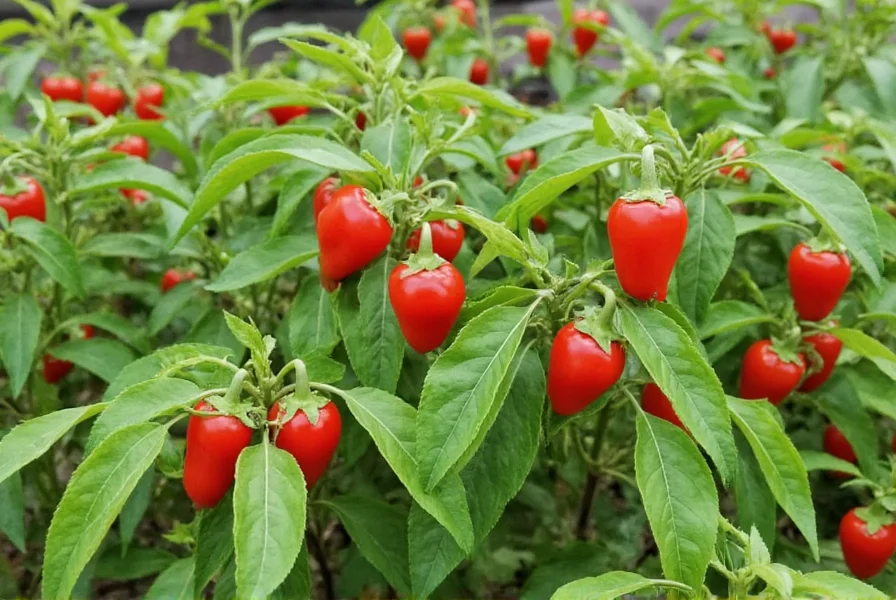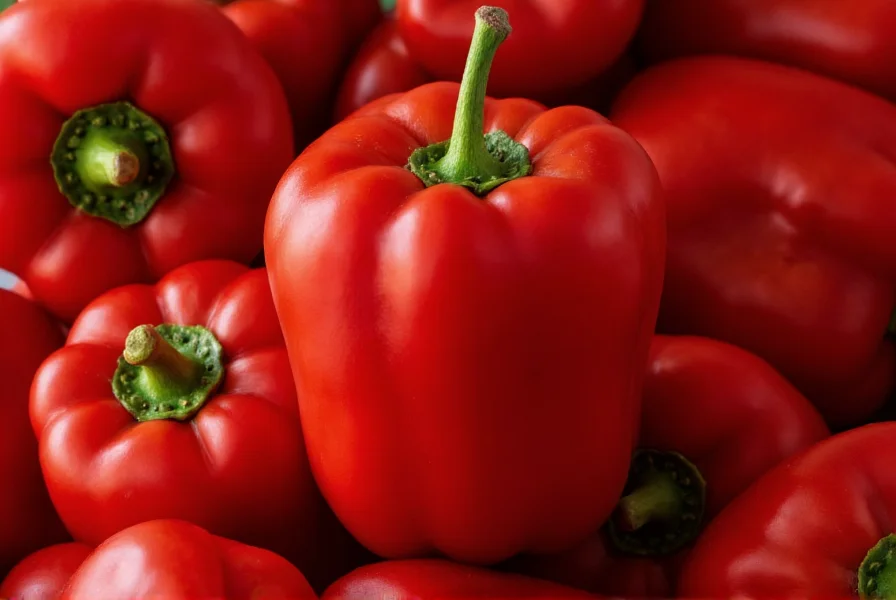When researching pepper varieties for your garden, understanding the specific characteristics of cultivars like Red Pepper III can significantly impact your harvest success. This comprehensive guide provides essential information for anyone considering growing this particular bell pepper variety, based on horticultural research and practical growing experience.
Understanding Red Pepper III Characteristics
Red Pepper III distinguishes itself through several key features that make it valuable for both home gardeners and small-scale commercial production. Unlike spicy chili varieties, this cultivar produces sweet peppers with a Scoville rating of zero, meaning no heat. The fruits typically reach 3-4 inches in diameter with walls measuring approximately 0.3 inches thick, providing substantial flesh ideal for various culinary applications.
One of the most notable red pepper iii growing requirements is its relatively short growing season. This variety reaches maturity in approximately 65-70 days from transplanting, making it suitable for regions with shorter growing seasons. The plants grow to a height of 24-30 inches with a similar spread, featuring sturdy stems that support the weight of the developing fruits without excessive drooping.

Growing Conditions for Optimal Results
Successful cultivation of red pepper iii begins with understanding its environmental preferences. This variety thrives in warm temperatures between 70-85°F (21-29°C) during the day and no lower than 60°F (15°C) at night. Like most pepper varieties, it requires full sun exposure—minimum six hours of direct sunlight daily—for optimal fruit production and color development.
Soil preparation represents a critical factor in red pepper iii cultivation. The ideal soil pH ranges from 6.0 to 6.8, with well-draining loamy soil enriched with organic matter. Before planting, incorporate 2-3 inches of compost into the top 6-8 inches of soil to improve fertility and structure. Raised beds work particularly well for this variety, as they provide better drainage and warmer soil conditions.
| Growing Factor | Red Pepper III Requirement | Notes |
|---|---|---|
| Days to Maturity | 65-70 days | From transplanting date |
| Plant Spacing | 18-24 inches apart | Allow 30-36 inches between rows |
| Soil pH | 6.0-6.8 | Slightly acidic to neutral |
| Water Needs | 1-2 inches weekly | Maintain consistent moisture |
| Disease Resistance | Tobacco Mosaic Virus, Phytophthora | Check specific seed packet |
Planting and Care Techniques
For best results with red pepper iii, start seeds indoors 8-10 weeks before your last expected frost date. Maintain soil temperature around 80-85°F (27-29°C) for optimal germination, which typically occurs within 7-14 days. Once seedlings develop two true leaves, transplant them into individual pots.
When transplanting to the garden, harden off seedlings gradually over 7-10 days to prevent shock. Plant in the evening or on cloudy days to reduce transplant stress. Apply a balanced fertilizer (10-10-10) at planting time, then side-dress with nitrogen-rich fertilizer when flowers appear. Mulching with organic material helps maintain consistent soil moisture and temperature while suppressing weeds.
One of the advantages of growing red pepper iii compared to other bell pepper varieties is its resistance to common pepper diseases. However, monitoring for pests like aphids, spider mites, and pepper weevils remains essential. Implement integrated pest management strategies, including regular inspection, beneficial insects, and organic controls when necessary.
Harvesting and Culinary Applications
Red Pepper III can be harvested at the green stage, but allowing the fruits to fully ripen to red significantly increases their vitamin C and beta-carotene content. Harvest peppers when they reach full size and develop a glossy appearance. Use sharp scissors or pruning shears to cut the stem above the fruit rather than pulling, which can damage the plant.
The thick walls and sweet flavor profile of red pepper iii make it exceptionally versatile in the kitchen. Chefs appreciate this variety for:
- Stuffed pepper recipes due to its substantial size
- Grilling and roasting applications
- Fresh salads and crudités
- Sauces and salsas where sweetness is desired
- Freezing for year-round use

Comparing Red Pepper III to Similar Varieties
When selecting bell pepper varieties, understanding how red pepper iii compares to alternatives helps make informed decisions. Unlike hybrid varieties such as 'California Wonder' which may offer larger fruits but less disease resistance, Red Pepper III provides a balanced combination of yield, disease tolerance, and flavor.
Gardeners in cooler climates particularly benefit from red pepper iii characteristics, as its earlier maturity allows for successful production where longer-season varieties might not fully ripen. Compared to heirloom varieties, this cultivar typically demonstrates more consistent performance and higher yields, though some heirlooms may offer more diverse flavor profiles.
Troubleshooting Common Growing Challenges
Even with its favorable red pepper iii growing requirements, gardeners may encounter certain challenges. Blossom end rot, characterized by dark, sunken spots on the fruit bottom, often results from calcium deficiency or inconsistent watering. Prevent this issue by maintaining even soil moisture and ensuring adequate calcium in the soil.
Yellowing leaves can indicate several potential problems, including nitrogen deficiency, overwatering, or fungal diseases. Regular monitoring and proper cultural practices significantly reduce these issues. If pests become problematic, consider organic solutions like insecticidal soaps or neem oil before resorting to stronger chemical controls.
Frequently Asked Questions
What makes Red Pepper III different from other bell pepper varieties?
Red Pepper III distinguishes itself through its early maturity (65-70 days), excellent disease resistance (particularly to Tobacco Mosaic Virus), and consistent production of large, thick-walled fruits. Unlike many bell pepper varieties that require longer growing seasons, this cultivar reliably produces fully ripened red peppers even in regions with shorter summers.
Can Red Pepper III be grown in containers?
Yes, Red Pepper III adapts well to container growing. Use pots with minimum 5-gallon capacity and ensure adequate drainage. Container-grown plants require more frequent watering and feeding than garden-planted peppers. Choose compact varieties if space is limited, but standard Red Pepper III performs well in larger containers with proper support for its 24-30 inch height.
How should I store harvested Red Pepper III peppers?
Store harvested Red Pepper III peppers in the refrigerator's crisper drawer at 45-50°F (7-10°C) with high humidity. Properly stored, they'll maintain quality for 2-3 weeks. For longer preservation, slice and freeze the peppers, or preserve them through pickling or drying. Never store peppers near ethylene-producing fruits like apples or bananas, as this accelerates spoilage.
Why aren't my Red Pepper III peppers turning red?
Bell peppers naturally change from green to red as they mature, but several factors can delay this process. Insufficient sunlight, temperature extremes (below 60°F or above 90°F), or nutrient imbalances may prevent proper color development. Ensure your red pepper iii plants receive adequate sunlight, consistent moisture, and balanced nutrition. Remember that peppers will continue ripening after harvest if kept at room temperature away from direct sunlight.











 浙公网安备
33010002000092号
浙公网安备
33010002000092号 浙B2-20120091-4
浙B2-20120091-4